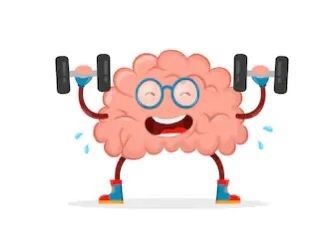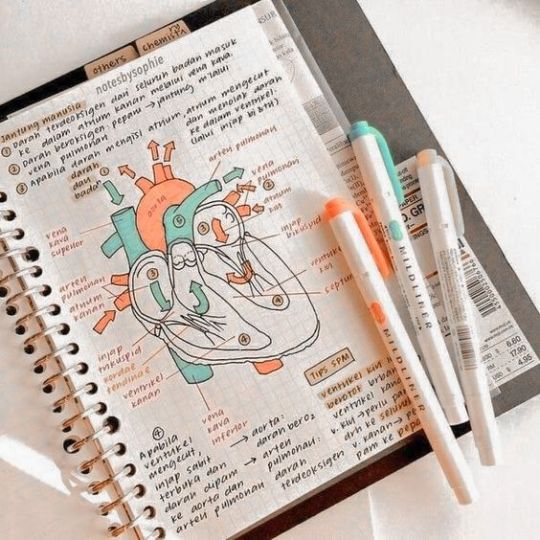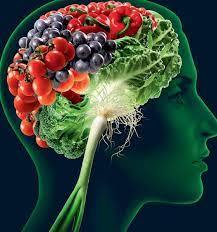#bdnf
Text
The Cognitive Commanders - Neurochemicals and Brain Functions
"The Cognitive Commanders - Neurochemicals and Brain Functions" explores the pivotal role of neurochemicals in cognitive processes. It delves into the functions of key neurotransmitters.
“The Cognitive Commanders – Neurochemicals and Brain Functions”
Welcome aboard our intellectual exploration in “The Cognitive Commanders – Neurochemicals and Brain Functions”. This journey delves into the fascinating realm of neurochemicals that serve as the architects and engineers of our cognitive processes. It’s like unlocking the secrets of a high-tech control room where learning, memory,…

View On WordPress
#Acetylcholine#Adenosine#BDNF#brain#Brain Growth#Breath#Breathing Exercises#Challenge#Exercise#Focus#Glutamate#Histamine#Hydration#Learning#Limit Alcohol#Memory#Neurochemicals#Neuropsychology#Neurotoxins#Nitric Oxid#Norepinephrine#Nutrition#Professional Guidance#psychology#Regulation#Relaxation#Sleep#Stress#Stress Management#Sunlight
0 notes
Text
Anxiety & Depression Influenced by The Microbiome
The human condition is not something many of us ponder until something goes wrong upstairs. Whether it be within our own psyche or that of a loved one mental illness can be a black hole of unknown dimensions adversely affecting lives. Things like anxiety and depression are often frightening due to their impact upon relatively unexplored realms. Our minds are vast repositories of memories,…

View On WordPress
1 note
·
View note
Link
Our study identified 119 proteins that differentiated Long-COVID outpatients from acutely ill COVID-19 inpatients and healthy control subjects. Each of the 119 proteins was significantly different in Long-COVID outpatients, as compared to other cohorts.
Two optimal models, with a subset of nine and five proteins, accurately differentiated Long-COVID patients from acutely ill COVID-19 inpatients and healthy control subjects.
The first optimal model contained nine proteins: CXCL5, AP3S2, MAX, PDLIM7, FRZB, EDAR, LTA4H, CRACR2A, and CXCL3. The optimal second model is a subset of the first with five proteins: CXCL5, AP3S2, MAX, PDLIM7, and FRZB.
The functions of the optimal nine proteins varied widely and appropriately corroborated that Long-COVID is a multifaceted condition in which multiple systems are affected.
The digestive system had the highest number of significant proteins with altered expression. This finding was consistent with a significant gut biome change identified in Long-COVID patients when compared to both controls and recovered COVID-19 patients without Long-COVID symptoms.
CES3 played an important role in adipocyte differentiation and promoted lipid storage.
Overexpression of SRC is involved with colon cancer and often results in metastasis via its signalling pathways.
The lymphatic system appeared to be highly affected in Long-COVID as more than 50% of the 60 significant proteins had expression in lymphatic organs. Of the 44 proteins with cell type expression information, lymphocytes and leukocytes not yet determined were the two most common cell types. Consistent with protein expression, autopsies of critically ill COVID-19 patients have revealed changes to the structure of the spleen and lymph nodes.
CRACR2A and CXCL3 were both linked to immune cell activation and may indicate an ongoing immune response in Long-COVID outpatients. CRACR2A participated in T-cell activation and functional CRACR2A changes were linked to immunodeficiency disorders.
Long-COVID appeared to highly impact the nervous system with symptoms often including headaches, fatigue, and brain fog (Raveendran et al. 2021; Ortelli, et al. 2021). The NLP expression analysis showed that a large number of proteins are highly expressed in the nervous system, particularly in neurons. FRZB, AP3S2, and MAX were not only part of the optimal model, but were also linked to neurological conditions. FRZB was linked to defects in sensory innervation and spinal innervation (John et al. 2012), and decreased FRZB expression was associated with increased neuronal development (Jang et al. 2013). AP3S2 was a small chain of the Adaptor-related protein complex 3 (AP-3). AP-3 subunit defects lead to severe neurological abnormalities including neurodevelopmental delays, intellectual disability and seizures (Guardia et al. 2018). MAX mutations were associated with hereditary pheochromocytoma, a neural crest cell-based neuroendocrine tumour in the adrenal medulla.
Beyond the panel of optimal proteins, PLXNB3, APP, and BDNF were also associated with neurological conditions. PLXNB3, overexpressed in our Long-COVID outpatients has been previously linked to COVID-19 (Yaşar et al. 2021); it was shown to stimulate neurite outgrowth in mice and was also associated with verbal performance and brain white matter volume in humans (Hartwig et al. 2005; Rujescu et al. 2007). Overexpression of APP was either a protective response leading to cell health and growth, or detrimental with increased Aß accumulation and decreased dendritic synapses (Hoe et al. 2012; O'Brien and Wong 2011). BDNF upregulation was shown to increase proliferation and differentiation of neural stem cells.
Survivors of acute COVID-19 were at an increased risk of developing cardiovascular disorders including ischemic heart disease, inflammatory heart disease, dysrhythmias, and thrombotic disorders (Xie et al. 2022). Vascular endothelial injury, angiogenesis and thrombosis were associated with acute COVID-19 pathophysiology.
Several pro-coagulation factors were in the top 119 proteins including GP5, GP6, and STX8 (Moog et al. 2001; Golebiewska et al. 2015). GP5 and GP6 are involved in platelet adhesion and aggregation (Moog et al. 2001; Veninga et al. 2022) and STX8 is involved in platelet granule secretion, aggregation and thrombus stability.
CCL17 was also noted to be an important biomarker for eosinophilic disorders including differentiating eosinophilic pneumonia from acute lung injury.
Overexpression of EREG, GTPBP2, and DRG2 was linked to tumor growth in non-small cell lung cancer.
#proteomics#long covid#covid effects#science journal#cancer#biomarkers#neurology#BDNF#protein#inflammation#microbiome
0 notes
Text
Indeed, diazepam, like BDNF, seemed to bring on a precocious imprinting.
"Nature via Nurture: Genes, Experience, and What Makes Us Human" - Matt Ridley
#book quote#nature via nurture#matt ridley#nonfiction#bdnf#brain derived neurotrophic factor#diazepam#imprint#imprinting
0 notes
Text
Magnesium is considered one of the essential minerals that’s involved in more than 300 different body processes, including:
keeping your heart beating & maintaining electrical stability of your NS.
magnesium is used by the body to regulate serotonin & other neurotransmitters.
some researchers believe that low magnesium is the problem behind treatment resistant depression.
magnesium is a NMDA receptor blocker. blocking NMDA increases the brain chemical called BDNF.
BDNF is like a fertilizer for the brain cells.
magnesium also decreases glutamate & GABA.
#magnesium#NS#heart#electrical stability#nervous system#depression#treatment resistant depression#nmda#bdnf#gaba#glutamate#JM*#BM*#glossary
1 note
·
View note
Text
Cognitive health and wellness 🧠
Hello everyone ! Have a wonderful and safe day 🙋🏻
Though we are moving fast in the field of science and technology, but are we taking enough care of our cognitive health? Just the way as we do for our physical health. Due to awareness around maintaining a healthy lifestyle, our life expectancy has increased twofold. Still, at the same time, there is an emerging number of brain and cognitive…

View On WordPress
#alzheimers#BDNF (brain derived neurotrophic factor)#brain#brain fog#cognitive functions#dementia#exercise#fitness#Food#healing#health#memory#mental health#neuroplasticity#Science#sleep#wellness
0 notes
Text
Happy Sinterklaas!
Time to break out the pepernoten!
#I forgot until I got back from classes#Cuz I was stressin about today's presentations#(I can tell you all about BDNF-mediated neurogenesis now)#And then I saw the date on my phone and was like hold up wait a second it's December 5 already??#I thought it was the third or something#But anyway#Sinterklaas day yay!
1 note
·
View note
Text
NEUROPLACISITY IN DEPTH.


(The content isn't mine but all complied into one big post, links are connected to the sources)
How do I re-wire my subconscious?
You re-wire your subconscious mind using NEUROPLASTICITY.
Neuroplasticity, also known as brain plasticity or neural plasticity, refers to the brain's ability to reorganize itself by forming new neural connections throughout life. It involves the strengthening or weakening of existing neural pathways and the development of new synapses.
This means you can re-wire your subconscious by building NEW PATHWAYS that become STRONGER than the old ones
I'd like you to start with understanding the importance of BDNF - Brain-derived neurotrophic Factor (BDNF) is a vital protein for neuroplasticity, acting as a linchpin in the adaptive processes of the brain. It supports facilitating synaptic plasticity through mechanisms like long-term potentiation (LTP) and fostering the formation of new synapses. You can increase your body's BDNF by:
Engage in regular exercise, particularly aerobic activities, to significantly increase BDNF levels and promote neuroplasticity.
Maintain a balanced diet rich in omega-3 fatty acids from sources like fatty fish and flaxseeds to support elevated BDNF production.
Prioritize adequate and quality sleep, as insufficient sleep has been linked to decreased BDNF levels.
Implement stress management techniques, such as mindfulness meditation and relaxation exercises, to positively influence BDNF secretion.
Breathwork and meditation are great options.
Understand the importance of regulating your nervous system - You must be able to regulate your nervous system to build neuroplasticity. This is because neuroplasticity may be hindered when the body is in a heightened state of stress or arousal (sympathetic dominance), characterized by increased heart rate and elevated cortisol levels. Breathwork and meditation are an incredible way to do this.
Psych central
Take new routes: Every new experience has the potential to enhance your brain’s ability to change. Travelling, for example, can help. Our brains are forced to stop auto-piloting in an unfamiliar environment like a new city. Research from 2013 shows that novelty and challenges can enhance cognitive function. So, technically, you don’t have to leave your town to promote brain plasticity. Consider finding alternative routes to your daily commute. Try that new coffee shop or restaurant around the corner. Go around your desk in the opposite direction that you typically do.
Move: A 2018 literature reviewTrusted Source showed that physical exercise can promote neuroplasticity in general. Activity is beneficial for many different regions of the brain and affects various aspects of cognitive function, including memory and learning. This might be helpful for people facing major or mild cognitive decline, including Alzheimer’s disease. In sum, exercising may help you slow the cellular ageing process and enhance your overall brain health.
Practice meditation: Studies show that long-term meditation practiceTrusted Source can change the function of the brain. Specifically, mindfulness practice can enhance focus and attention and prevent cognitive declineTrusted Source.
Learn a new skill: The relationship between learning and neuroplasticity is twofold. Learning new things enhances brain plasticity, and because of the brain’s ability to adapt to change, you’re able to learn. In this sense, every time you learn something, you benefit from neuroplasticity and promote it.
Research backs this up.
A 2021 study, for example, suggests that learning a new skill, such as Braille language, can promote neuroplasticity and enhance its benefits.
Other examples include learning to:
- use your non-dominant hand
- speak a new language
- play a new instrument
- paint or draw
- code computers
- do puzzles
55 notes
·
View notes
Text
Exercise and Memory
Every single time you move your body, you are releasing a whole bunch of neurochemicals. The good mood comes from dopamine, serotonin, and noradrenaline, but the thing that also gets released, particularly with aerobic exercise, is a growth factor called a brain-derived neurotrophic factor, or BDNF. And that is important because it goes directly to your hippocampus, and helps brand new brain cells grow. The hippocampus and related brain circuits allow us to take certain experiences and commit them to memory. If you are exercising, it is like giving your hippocampus a boost with BDNF. This means that we all have the capacity to grow a bigger, fatter, fluffier hippocampus.
I like to give people this image of every single time you move your body, it's like giving your brain this wonderful bubble bath of neurochemicals. And I'm not going to cure my father's Alzheimer's dementia, but you know what? If I go into my 70s with a big fat, fluffy hippocampus, it's going to take longer for that disease to start affecting my ability to form and retain new long-term memories of facts and events, which is my motivation for getting up and doing my 30 to 45 minutes of aerobic exercise every day.
- Dr. Wendy Suzuki, Ph.D., Professor of Neural Science and Psychology on Huberman Lab Podcast #73
1K notes
·
View notes
Text
9 Scientifically Proven Ways to Get the Most Out of Study Tim
For anyone in the thick of study, or about to be, science has been working hard and has found ways to help you get the most out of your study time, all backed by hefty research. Here’s how to study smarter, supercharge your learning and store the information away in your head so it’s ready to jump into your arms when you need it.
Get your heart pumping.When you exercise, your blood chemistry changes and your brain becomes the very happy recipient of important nutrients. It repays the favour by amping up its performance – specifically memory, attention, information processing and problem solving. Here are a couple of reasons your brain and exercise are one of the great love stories:
• Exercise increases the levels of a crucial brain-derived neurotophic factor (let’s call it BDNF – it’s much easier to spell). BDNF is important for the growth of brain cells, mood and learning.
• Exercise releases a powerful cocktail of important hormones including serotonin (the mood booster), dopamine (for learning and attention) and norepinephrine (for awareness, attention and concentration).
Try for 20-30 minutes a day. Anything that increases your heart rate will do the trick – running, bike-riding, walking, kicking a ball or turning up the beats and dancing it out. It doesn’t have to be beautiful, strong or graceful. It just has to be active.
Spread your study. Yep. You got it. No cramming.
Cramming doesn’t work, which is one of the great pities – life would be so much easier if it did. The problem with cramming is that the material doesn’t get the opportunity to transfer into long-term memory. Short term memory is like the party space in your head – information is there for a good time but not a long time. When information hits long-term memory, it’s committed and there when you need it. The transfer of information from short-term memory into long-term memory takes time and repeated exposure to the material. It’s not clear why spacing your study is so much better for you, but it’s likely that over a few days you’ll forget some of the material, then remember it again when you come back to your books. This increases exposure to the information which takes it closer to long-term memory.
Know what’s to come.
We only have a limited amount of mental resources, and during a test you want as much of those resources available as possible. The thoughts that come with test anxiety steal some of those mental resources for, you know, worrying, leaving fewer resources available to retrieve important information. Researchers have found that looking through an exam before working on it will reduce anxiety and improve performance. Remember though, that all the mental resources in the world won’t find the right answers in memory if the answers aren’t put there solidly in the first place.
Teach what you’ve learnt.
Expecting to teach what’s been learned has been shown to be better for learning and memory than expecting only testing. It’s a subtle shift in mindset, but the effect on learning is an important one. Learning material with an intention to teach ensures that material is actively understood and stored away in memory, and not passively looked over.
Test yourself.
Testing yourself will force you to remember information. Every time you remember something, the information becomes a little more enduring. Testing yourself might also help to take the fire out of test anxiety, in the same way that exposure to any feared object eventually makes that object less frightening. Testing yourself on the material you’ve learned is more effective than reading the material over and over. Re-reading material might get you thinking that you’re familiar with the material, but until you try to retrieve that material from memory, you won’t actually know how well you know it or where the gaps in your knowledge are.
Get some sleep.
Sounds simple enough, but it’s not always easy when there’s so much to do. Deep sleep causes physical changes in the brain. When you learn something, your brain cells grow new connections that reach out and connect to other brain cells. This strengthens the pathways in your brain around whatever it is your learning. Sleeping after learning encourages memories of the information to be wired into your brain, so it’s less likely to fade. Think of your brain like a tree. Learning causes a branch to grow, but sleep helps it to grow the leaves and other tiny branches that will sustain and strengthen it.
And ditch the all-nighters.
All-nighters will mess with your ability to remember and process information. Sleep prepares your brain for learning, so pulling an all-nighter can cut your capacity to learn new things by up to 40% – and that’s not the only problem. Research has shown that it can take up to four days for your brain to return to normal after you’ve been awake all night.
Take a break
For those feeling shackled to all that is study, here is some sweet, sweet news. Taking a short break after every hour of learning is better than working straight through as it improves your ability to focus on a particular task without being distracted. Research has found that the greatest improvement come following 15 minutes of moderate activity (jogging, a brisk walk, dribbling a ball) but improvement was also shown following vigorous activity (running, jumping, skipping) or a passive break (such as listening to music or watching funny YouTube clips – because for sure that’s why they were invented). Memory is strongest for the things learned immediately before and after a break so keep those times for the tough stuff.
Power pose.
Before a test, find somewhere private (or, totally public – up to you) and strike a power pose. Think Wonder Woman – hands on hips, legs apart; Superman – tall, shoulders back, chest expanded, arms stretched out in front of you; or that boss thing that bosses in the movies do – sitting back the bottom of one leg resting on the thigh of the other, hands behind your head and expanded. This will reduce cortisol (the stress hormone), and increase testosterone (the dominance hormone). The mind-body connection is a strong one. If you don’t believe you can do it, act like you can – eventually your mind won’t know the difference and will have you believing you can do anything – which you can.
So, if study and you are spending a lot of time together, remember to take breaks, get some pillow time, get active, or dig for comedy gold on YouTube – whatever works for you. Maybe try a bit of everything – not for too long though – the world can’t be brilliant without you.


#university#diary#my day#biology#science#blogger#unidays#study motivation#study blog#real life#student#100 days of studying#new studyblr#phd student#student life#study#study aesthetic#study hard#study inspiration#study notes#study space#study tips#study with me#studyblr community#studyblr#studying#studyspo#studywithme#writers strike#university student
29 notes
·
View notes
Text
7 Tips To Improve Concentration

It's often said our attention span is shorter than ever, and a survey from energy supplements brand ProPlus found that 41 per cent thought it was worse since the pandemic.
But there are steps you can take to help you focus better.
1 - Minimise distraction
Removing yourself from people and devices will allow you to concentrate better. Work in a different room if you can. If you find yourself sidetracked by digital devices, turn off notifications and train yourself to check them at set intervals. Set a timer.
2 - Find the right sound
Whether it's music, white noise or even silence, you might find there's a particular sound that helps you maintain your attention. This enhances alpha waves-brain waves that promote relaxation and are thought to play a role in cognition and, according to a small 2015 American study, make you more creative.
3 - Move your body
When you exercise, your heart rate increases, prompting your body to release a protein called brain-derived neurotrophic factor, or BDNF, which aids nerve cell growth. This is important for concentration, memory and learning.
4 - Focus on the right foods
You might get a boost from certain so-called "brain foods". These include fish, nuts, blueberries and dark chocolate (in moderation, of course!). One of the best ways to keep your brain in trim is to eat a healthy diet.
5 - Sleep well
Who doesn't suffer from brain fog after a bad night? Everyone needs different amounts of shut-eye but aiming for seven to nine hours is considered the ideal.
6 - Structure your life
Having a daily routine, including breaks, will minimise the brain fatigue that goes with having to make endless on-the- hoof decisions and allow you to focus on the really important stuff.
7 - Fix attention-sapping health issues
Tackle hearing problems, which demand excessive and sometimes exhausting concentration, sleep apnoea or depression, and consider whether you might have ADHD.
👉Follow @everythingaboutbiotech for more helpful posts
#ProductivityTips#productivity#productivity hacks#FocusBoost#ConcentrationHacks#DistractionFree#BrainHealth#HealthyLiving#MindfulWork#SleepWellLiveWell#RoutineMatters#WellnessJourney
16 notes
·
View notes
Photo

Axon Rebuilding
Unlike the neurons in the central nervous system (CNS), those outside the brain and spinal cord – the peripheral nervous system (PNS) – can regenerate their ‘electrical cable’-like fibres (axons) after injury. Understanding how this happens could be of huge benefit for treating a range of conditions such as stroke, spinal cord injury and others in both the CNS and PNS. Researchers have now discovered in mice that the levels of a protein called RSK1 are higher after sciatic nerve injury. Forcing neurons to over-produce RSK1, caused an increase in two proteins called BDNF and IGF1 that helped regrow the neuron’s axon. Here we see a ‘normal’ neuron (top left) and longer neurons with increased levels of RSK1 (top middle and right). By inhibiting either BDNF (bottom left), IGF1 (bottom middle) or both (bottom right), the regrowth of the axons was impaired, suggesting RSK1 is essential for regeneration of these signal-transmitting projections.
Written by Sophie Arthur
Image adapted from work by Susu Mao, Yuanyuan Chen and Wei Feng, and colleagues
Key Laboratory of Neuroregeneration of Jiangsu and Ministry of Education, NMPA Key Laboratory for Research and Evaluation of Tissue Engineering Technology Products, Co-innovation Center of Neuroregeneration, Nantong University, Nantong, China
Image originally published with a Creative Commons Attribution 4.0 International (CC BY 4.0)
Published in PLOS Biology, June 2022
You can also follow BPoD on Instagram, Twitter and Facebook
#science#biomedicine#neuroscience#nerves#axons#nerve injury#stroke#spinal injury#central nervous system#peripheral nervous system#sciatic nerve#microscopy
166 notes
·
View notes
Text
Ketamine is a popular NMDA blocker
it was approved for treatment-resistant depression in 2019.
it is a hallucinogen & so it is not very easy to take for depression, but it works very fast by its powerful effect on increasing BDNF.
0 notes
Text
Küçük Değişikler İle Beyin Sağlığınızı Koruyabilirsiniz

Hepimiz daha sağlıklı beyinlere sahip olmak isteriz. Ancak yaşlandıkça beyinlerimizin zayıfladığı, anılarımızın azaldığı ve tepkilerin yavaşladığı fikrini kabul etmek işin kolay kısmıdır. Yaşlandıkça vücudunuzdaki ve beyninizdeki değişiklikler normaldir. Bununla birlikte, hafızadaki herhangi bir düşüşü yavaşlatmak ve Alzheimer hastalığı veya diğer demansları geliştirme riskinizi azaltmak için yapabileceğiniz bazı şeyler vardır.

Bu konuda yapılan çok sayıda araştırma var. Bunların hemen hepsi beyin sağlığımızı iyileştirmek için asla çok geç olmadığını gösteriyor. Yine bu araştırmalar sayesinde biliyoruz ki bilişsel yeteneklerdeki değişimin yalnızca yüzde 25’i DNA tarafından belirleniyor. Diğer bir deyişle beyin sağlığımızın dörtte üçü yaşam tarzımız ile ilişkili. Buradan da anlıyoruz ki, yaşlanmayı yavaşlatan – hatta tersine çeviren – alışkanlıkları edinerek beyin sağlığımıza katkı sağlayabiliriz.

1- Kaliteli Beslenme
Uzun çalışma saatleri, yüksek düzeyde stres ve yüzlerce dikkat dağıtıcı içeren modern yaşam, genellikle sürekli yemek yeme ve atıştırma anlamına da gelir. Ancak beynimiz, yiyeceklerin periyodik olarak kıt olduğu bir zamanda gelişti. Yapılan çalışmalar, yeme miktarını azaltma ile hipokampus ve diğer merkezlerde nörojenez için kritik bir protein olan beyin kaynaklı nörotrofik faktör (BDNF) seviyeleri arasında bir ilişki olduğunu göstermiştir. Yani dönen dönem tükettiğiniz besin miktarını azaltmanız iyi bir öneridir.
Ancak ne tükettiğiniz de önemlidir. Bu nedenle çok farklı beslenme biçimleri önerilir. Ancak bu noktada eklemek gerekir. Beyin için süper gıda diye bir kavram yoktur. Yapılan araştırmalar genelde birbiri ile tutarsız sonuçlar ortaya koymaktadır. Bu nedenle kalitesiz besinleri hayatınızdan uzak tutarsanız zaten kaliteli bir beslenme düzenine geçmiş olursunuz.

Ayrıca D vitamini de beyin sağlığımız için çok önemlidir. Vitamin reseptörleri beyinde yaygın olarak bulunur ve düşük seviyeleri, zayıf zihinsel performans ve bilişsel gerileme ile ilişkilidir. Yeterli D vitamini almanın en kolay yolu da bir miktar güneş almaktır. Son olarak, dünya çapında pek çok çalışma, düzenli sakız çiğneme ile hafıza arasında bir ilişkiye işaret ediyor. Kesin mekanizmalar tam olarak anlaşılamamış durumda. Ancak olası bir açıklama, çiğnemenin kan akışını arttırdığı ve bu durumun beyindeki oksijen seviyelerini iyileştirdiği biçiminde.

Sizi Mutlu Eden Şeyleri Yapın
Her gün verdiğimiz on binlerce kararın çoğu, olumlu deneyimler aramak ve olumsuz deneyimlerden kaçınmakla ilgilidir. Yani bir yerde mutlu olmanın yolunu arar dururuz. Ancak bu sadece felsefi bir yaklaşım değildir. Günümüzde duygusal olarak iyi hissetmenin beyin sağlığımız için kritik önem taşıdığını biliyoruz. Çalışmalar, sosyal ilişkileri sürdürmenin, aktif kalmanın ve yaşamda bir amaca sahip olmanın beyin sağlığına katkıda bulunduğunu gösteriyor.


Yaşamda bir amaç duygusu bulmak bazen zor olabilir. Ancak atabileceğiniz bazı adımlar var. Örneğin herhangi bir sanat dalıyla uğraşmak, dünyayı yeni ve benzersiz şekillerde görmenize yardımcı olabilir. Deneyiminiz yok ise dert etmeyin. Pek çok beceri gibi, sanatsal yetenekler de genellikle zamanla ve pratikle gelişir.
İyi olma duygumuzu geliştirmenin başka yolları da var. Olumsuz düşünceleri daha iyi kontrol edebilen ve olumlu düşünceyi benimseyen kişilerin, bilişsel becerilerini daha uzun süre korudukları bilinmektedir. Dengeyi sağlamanın anahtarlarından biri stresi yönetmektir. Yoga, meditasyon, sanat, müzik ve ılımlı alkol tüketimi dahil olmak üzere birçok stres azaltıcı aktivite beyin sağlığına fayda sağlar. Bu tarz aktiviteler sizi sadece daha iyi hissettirmekle kalmaz, aynı zamanda daha iyi düşünmenizi de sağlar.

Beyni aktif ve genç tutmaktan bahsediliyorsa ilk akla gelmesi gerekenlerden birisi de egzersiz yapmaktık. Yürümek, koşmak, yüzmek, bisikletine binmek ve sizi hareket ettiren diğer egzersizler vücut sağlığınızın yanı sıra beyin sağlığınıza da iyi gelecektir. Egzersiz, BDNF salınmasıyla nörogenezi artırır. BDNF, merkezi sinir sistemi ve periferal sinir sisteminin mevcut nöronları üzerine etkilidir. Yeni oluşan sinir hücresi ve sinapsların farklılaşmasını, büyümesini desteklerken mevcut nöronların canlılığının devamını sağlar.
BDNF seviyenizi yükseltmek için günlük en az 30 dakikalık egzersiz, tempolu yürüyüş veya bisiklete binme gibi şeylere ihtiyacınız var. BDNF’nizi gerçekten en üst düzeye çıkarmak istiyorsanız egzersiz süresini ve yoğunluğunu arttırmalısınız. Dünya genelinde Alzheimer hastalığı vakalarının yüzde 13’ü hareketsizliğin sonucudur. Bu yüzden tavsiye basit: Oturmaktan kaçının ve daha aktif bir hayata başlayın.
4. Kaliteli Uyku
Vücudumuz, milyonlarca yıl içinde evrimleşmiş belli ritimler barındırır. Vücut ısısı, kan basıncı, metabolizma ve daha onlarca karmaşık biyolojik ritim birlikte hareket eder. Ancak bu ritimlerin bozulması sağlığımız açısından risklidir. Modern yaşamda uykusuzluk önemli bir sağlık sorunudur. Uyku eksikliği kronik hale gelince sadece genel sağlığımıza zarar vermekle kalmaz, aynı zamanda öğrenmeyi, hafızayı, dikkati, karar vermeyi ve ruh halini de olumsuz etkiler. Hatta bunama ve bilişsel gerileme için bir risk faktörüdür.
Duymuş olabileceğiniz gibi, yaşlandıkça daha az uykuya ihtiyacımız olduğu da doğru değil. Bu efsane, değişen sirkadiyen ritimler ve diğer faktörler nedeniyle yaşlandıkça uykuya dalmanın zorlaşması gerçeğinden doğar. 60 yaşın üzerindeki kişiler 24 saatlik bir süre içinde günde 7 ila 9 saat uykuya ihtiyaç duyarlar.
Daha iyi uyumamıza yardımcı olmak için yapabileceğimiz pek çok şey var. Özünde bunlar rutin bir uyku vaktini korumaya çalışmak, günün geç saatlerinde kafeinden kaçınmak ve karanlık, sessiz bir odada uyumak gibi iyi bir uyku düzeni sağlamak gibi basit alışkanlıklardır.

BDNF seviyenizi yükseltmek için günlük en az 30 dakikalık egzersiz, tempolu yürüyüş veya bisiklete binme gibi şeylere ihtiyacınız var. BDNF’nizi gerçekten en üst düzeye çıkarmak istiyorsanız egzersiz süresini ve yoğunluğunu arttırmalısınız. Dünya genelinde Alzheimer hastalığı vakalarının yüzde 13’ü hareketsizliğin sonucudur. Bu yüzden tavsiye basit: Oturmaktan kaçının ve daha aktif bir hayata başlayın.

Kaliteli Uyku
Vücudumuz, milyonlarca yıl içinde evrimleşmiş belli ritimler barındırır. Vücut ısısı, kan basıncı, metabolizma ve daha onlarca karmaşık biyolojik ritim birlikte hareket eder. Ancak bu ritimlerin bozulması sağlığımız açısından risklidir. Modern yaşamda uykusuzluk önemli bir sağlık sorunudur. Uyku eksikliği kronik hale gelince sadece genel sağlığımıza zarar vermekle kalmaz, aynı zamanda öğrenmeyi, hafızayı, dikkati, karar vermeyi ve ruh halini de olumsuz etkiler. Hatta bunama ve bilişsel gerileme için bir risk faktörüdür.

Duymuş olabileceğiniz gibi, yaşlandıkça daha az uykuya ihtiyacımız olduğu da doğru değil. Bu efsane, değişen sirkadiyen ritimler ve diğer faktörler nedeniyle yaşlandıkça uykuya dalmanın zorlaşması gerçeğinden doğar. 60 yaşın üzerindeki kişiler 24 saatlik bir süre içinde günde 7 ila 9 saat uykuya ihtiyaç duyarlar.
Daha iyi uyumamıza yardımcı olmak için yapabileceğimiz pek çok şey var. Özünde bunlar rutin bir uyku vaktini korumaya çalışmak, günün geç saatlerinde kafeinden kaçınmak ve karanlık, sessiz bir odada uyumak gibi iyi bir uyku düzeni sağlamak gibi basit alışkanlıklardır.

Sirkadiyen ritimlerini rutin olarak bozan kişilerin nörodejeneratif ve psikiyatrik bozukluklar için yüksek risk altında olduğu defalarca kanıtlanmıştır. Bu durum kritik nörotransmiterlerin üretimini zayıflatır ve hatta beyin hücrelerimizin enerjiyi işleme şeklini bile etkileyebilir.

Yeni Beceriler Edinin
Zeka oyunları, bulmacalar ve bilgisayar oyunları bilişsel beceriler ile ilgilidir. Bu tip faaliyetlerin bilişsel gerilemeyi yavaşlattığı veya bunama riskini azalttığı bilinmektedir. Ancak bunlardan da önemlisi psikologların “bilişsel olarak uyarıcı” dediği – yani konsantrasyon ve tekrar gerektiren – faaliyetlerdir. Yeni bir şeyler öğrenmemizi gerektiren faaliyetlerin yeni beyin hücrelerinin büyümesini sağladığı, nöronal hücre ölümünü önlediği ve beynin yeni bağlantıları adapte etme ve kurma becerisi olan nöroplastisiteyi geliştirdiği de bilinir.

Yukarıda listelediklerimiz neredeyse herkesin yapabileceği oldukça basit eylemler. Henüz yapmadıysanız bu alışkanlıklar üzerinde yoğunlaşmaya çalışın. Bu alışkanlıklardan herhangi birine başlamak, kısa vadede daha yüksek üretkenliğe ve yaşamınız boyunca daha iyi bilişsel sağlığa yol açacaktır. Ayrıca inanın beyniniz daha mutlu olacaktır!
Sibel Çağlar
Matamatiksel
95 notes
·
View notes
Note
tips to get through something scary?
i’ve adopted a few different ways of thinking as of recently; they come in the form of one-liners: we have not got long to love so why wait + we must keep going and heal despite it all.
when people encounter something that frightens them, the hypothalamus in your brain reacts by releasing a series of chemicals to the sympathetic nervous system and the adrenal-cortical system. in the sympathetic nervous system, signals are sent out to release stress hormones. the adrenal-cortical system is also secreting hormones to other parts of the body, which instigates changes in your heart rate, immune + digestive system, etc. these send your body into high gear, activating your fight vs flight vs freeze. here, your nervous system can either shut down or you can regulate it and let it come back to equilibrium.
in november, i experienced the scariest thing that has ever happened to me. since then, i’ve been dealing face to face with fear in several instances (though nothing has been worse than that specific instance) and have come to the conclusion that you will never escape fear of any degree. it’s not something to be conquered. you’ll be afraid of one thing, get through it, move on, heal, and then you’ll get this pitted feeling in your stomach and realize you’re now afraid of something else. you will first have to accept that you are not against fear; fear is just trying to protect you and keep you safe from previously triggered feelings. moving against the current pushes you back with more force right? so move with it.
a few practices that help me:
in therapy, i have brain-spotting (a form of therapy) sessions that actively focus on the fight vs flight process and works backwards to reframe how you process it in the present moment rather than afterwords. it helps with decreasing the chances of me intellectualizing the fear and actually facing it.
which leads to, if i am scared, whatever i am doing, i do it scared. whether it takes baby steps or leaps, i will be scared and open to every possible outcome, because 1. i have faced what i believed to be the scariest thing and i am okay now 2. we have not got long to love, so let me love myself and my fear and continue despite. if i am not okay afterwards, i will receive myself with grace and care. there will be things happening all the time, so we must keep going.
set aside 15 minutes of your day, put a timer on your phone, call it your worry/fear period. write down all your worries, scribble, journal, brain dump. cry about your fears, feel it HEAVILY, for those 15 minutes. put on a sad song, put on a song that makes you scared or feel a lot, and let yourself feel as uncomfortable as humanly possible. when the timer ends, take a few deep breaths. reset. you're okay. you felt it. you didn't think about anything else, you didn't try and find a solution, you just sat there and felt it. wholly.
if it's something you can manage, call up a friend or someone you love and talk it through with them. keep them on the phone while you do the said scary thing. you don't have to be alone. we are built for community. allow that love. the water from these interactions that will fall into your soil will help your trees grow.
sink into nature. this sounds odd, but it's something that's helped me before. i will take a walk with my dog or work out or meditate outside. body movement increases brain-derived neurotrophic factors known as BDNF which enhances cognition by boosting a neuron’s ability to communicate with other neurons. it also stimulates the production of brain chemicals norepinephrine and dopamine, which energize and elevate mood and can help bring clarity. this isn't a end-all, be all solution but a clearer mood can help stabilize the anxiety that derives from fear.
26 notes
·
View notes